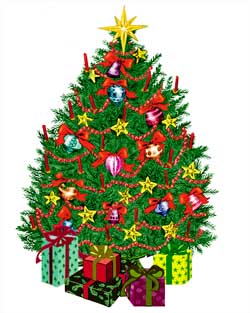
For Christmas trees such as Douglas Fir, Frazer Fir, Balsam Fir, White Spruce, Norway Spruce, and Blue Spruce, timing can be everything, especially when it comes to weather. Generally, hot and dry summer and fall conditions can create a loss of color, increased insect pressure and premature death of many young (one to four years) and mature (five years plus) Christmas trees. For this year, some growers are reporting that many plantings of young trees have died as a result of extreme summer drought stress conditions. Fortunately, most mature trees were able to escape the damage of a hot and dry summer due to a wet spring that provided for good subsoil moisture. In addition, timely rains in September and October along with cool weather conditions during the late fall significantly improved the quality of most mature trees. Interestingly, the drought of 2001 also contributed to an improved stand of mature Christmas trees by encouraging the further development of deep root systems necessary to tap into subsoil moisture that was available at depths of 3 feet or more, according to Agricultural Specialist Bob King. For much of western New York, above average and heavy rain falls during the months of April, May and June promoted complete saturation of the subsoil. This subsoil moisture provided an excellent water reserve for mature trees to tap during extraordinary heat and dry weather conditions experienced by most of New York and Pennsylvania during the summer and early fall. Although rains during the fall were below average, the timing and types of rains helped prevent the yellowing of the needles associated with drought. Light rains (misting) proved to be just in time in order to maintain and improve the quality of most Christmas trees. In addition, most of New York and Pennsylvania experienced cooler than normal temperatures after mid October that greatly aided in promoting the coloring of most varieties. Retailers of cut trees and cut your own trees are reporting improved availability in sizes and quality as compared to last year. Consequently, we expect good availability in all sizes and good to excellent quality of both cut and cut your own Christmas trees. Suppliers have experienced excellent weather conditions for cutting, which began in full swing as of November 11. Most wholesalers are reporting an adequate supply and with prices similar to last year. However, some retailers are reporting wholesale price increases of 10 to 15 percent on some premium trees such as Frazer fir due to an increased demand by consumers for this popular tree. At this time, we do not expect retailers to increase prices due to an extremely competitive retail market for Christmas trees. For the Rochester region, preliminary consumer demand estimates suggest a slight increase in demand for Christmas trees as more consumers return to more traditional ways in which to celebrate the holiday season. However, recent down turns in the local economy may offset any significant growth in sales experienced over the last three years. New York state has 1,060 farms growing trees that account for $12,491,000 in farm revenue. Monroe County is the fourth largest grower of Christmas trees in the state in terms of farms (41) and acreage (88) with over a half million dollars in farm revenue. Steuben County is first in the state with 55 farms growing trees on over 229 acres. |
